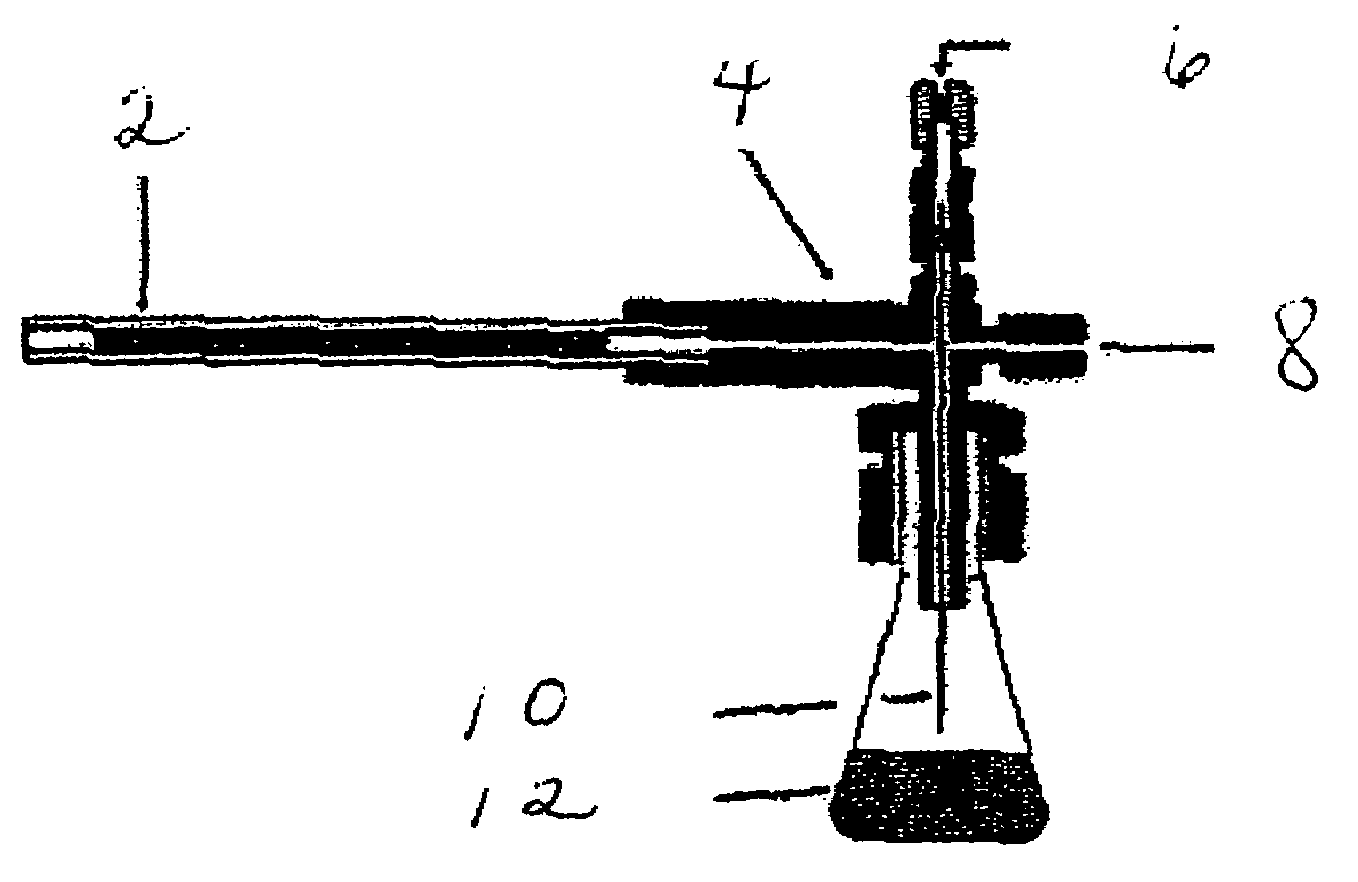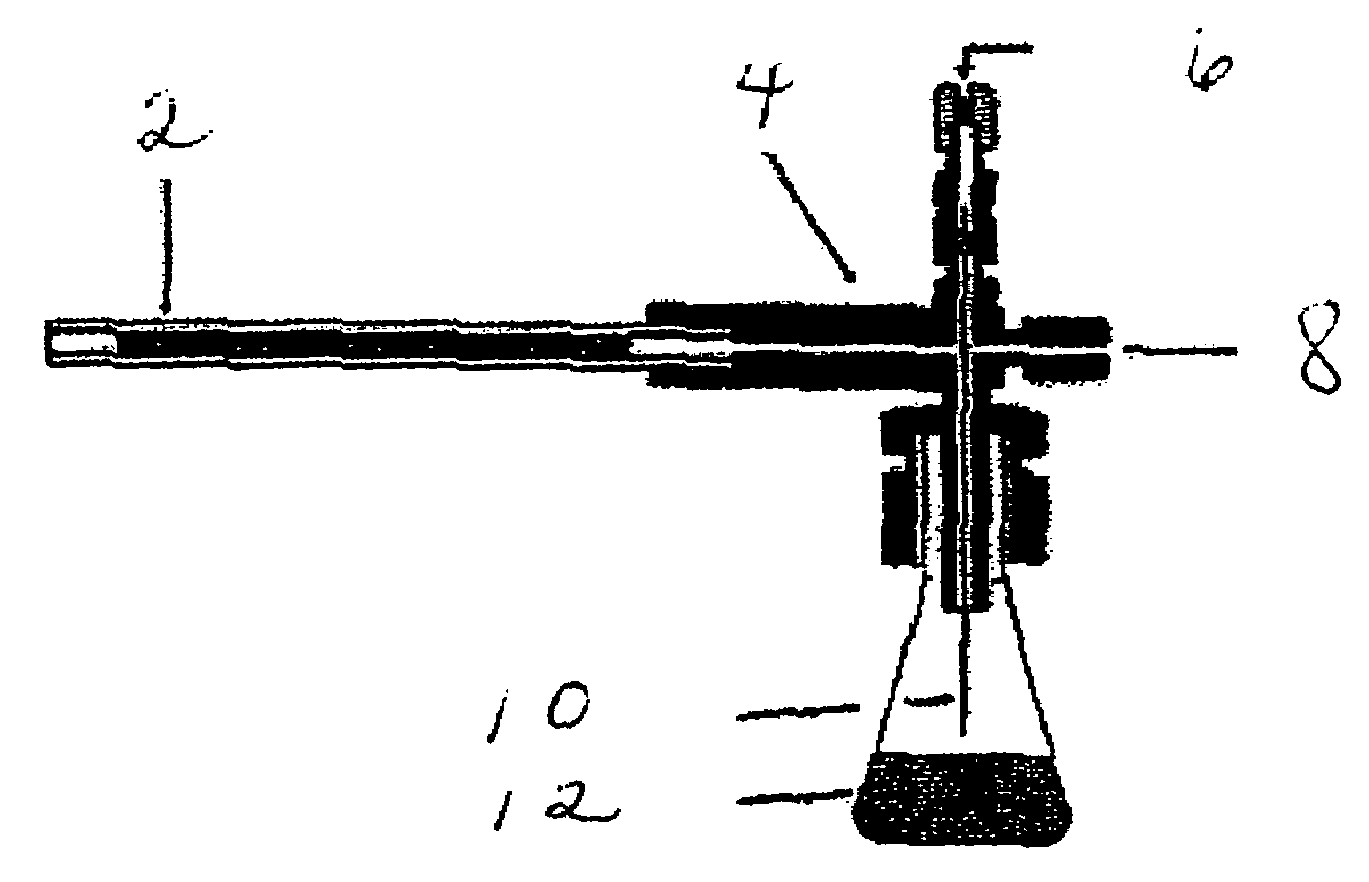Bland tasting soy protein isolate and processes for making same
a technology of soy protein and isolate, which is applied in the field of bland tasting soy protein isolate, can solve the problems of serious taste damage, bitter taste, and low yield of high-protein foods, and achieve excellent functionality
- Summary
- Abstract
- Description
- Claims
- Application Information
AI Technical Summary
Benefits of technology
Problems solved by technology
Method used
Image
Examples
example 1
[0115]In this Example, a soy protein isolate is prepared using a process of the present disclosure.
[0116]PROCON® 2000 (300 pounds) (The Solae Company, St. Louis, Mo.) is mixed with water and hydrated at a water to PROCON® 2000 weight ratio of about 10:1 to produce a dispersion. The water is at a temperature of about 32° C. to facilitate hydration. The dispersion is direct steam heated to about 154° C. and held at this temperature for about 9 seconds to produce a heated slurry. The heated slurry is then flash cooled to about 54° C. and is collected for further processing. The cooled slurry is centrifuged at a flow rate of about 110 pounds per minute in a co-current flow using two separation steps, each of which utilizes a decanter centrifuge (Sharples® P-3400 by Alfa-Laval, Sweden). The centrifuge cake from the first separation is diluted using water heated to about 32° C. at a 6:1 weight ratio of water to PROCON® 2000. The second centrifuge cake is discarded. The supernatant stream ...
example 2
[0119]In this Example, the soy protein isolate as prepared in Example 1 is analyzed to determine various properties of the soy protein isolate. The results of the analysis are shown in Table 2. All results are on a moisture-free basis (MFB) unless otherwise stated. Standard testing procedures are used for analysis unless otherwise disclosed herein.
TABLE 2Amount DeterminedComposition or Element Determinedin Soy Protein IsolateProtein (weight percent)94.58Crude Fat (weight percent)Fat by Acid Hydrolysis (weight percent)1.77Ash (weight percent)4.24Sodium (ppm)15,030Potassium (ppm)1178Calcium (ppm)1004Phosphorus (ppm)8,329Magnesium (ppm)553Isoflavones43.7(microgram / gram total dry matter)Daidzin6″-O-malonyldaidzin13.516″-O-acetyldaidzin2.08DaidzeinGenistin6″-O-malonylgenistin16.636″-O-acetylgenistin4.16GenisteinGlycitin4.166″-O-malonylglycitin2.08Glycitein1.04Nitrogen Solubility Index (NSI) (%)88.6Viscosity (10% Dispersion) (cP)204
[0120]The total amount of ash in the soy protein isolate ...
example 3
[0125]In this Example, the process as set forth in Example 1 is repeated with the exception that instead of a 10:1 water to PROCON® 2000 weight ratio, a 20:1 water to PROCON®) 2000 weight ratio is used for the initial hydration and mixing to produce the dispersion. The produced isolate is analyzed to determine various properties of the soy protein isolate. The results of the analysis are shown in Table 3. All results are on a moisture-free basis unless otherwise stated.
TABLE 3Amount DeterminedComposition or Element Determinedin Soy Protein IsolateProtein (weight percent)94.86Crude Fat (weight percent)Fat by Acid Hydrolysis (weight percent)2.45Ash (weight percent)4.03Sodium (ppm)13,218Potassium (ppm)672Calcium (ppm)739Phosphorus (ppm)7408Magnesium (ppm)372Isoflavones31.3(microgram / gram total dry matter)Daidzin6″-O-malonyldaidzin8.346″-O-acetyldaidzin2.08DaidzeinGenistin6″-O-malonylgenistin11.476″-O-acetylgenistin3.13GenisteinGlycitin4.176″-O-malonylglycitin1.04Glycitein1.04Nitrogen S...
PUM
 Login to View More
Login to View More Abstract
Description
Claims
Application Information
 Login to View More
Login to View More - R&D
- Intellectual Property
- Life Sciences
- Materials
- Tech Scout
- Unparalleled Data Quality
- Higher Quality Content
- 60% Fewer Hallucinations
Browse by: Latest US Patents, China's latest patents, Technical Efficacy Thesaurus, Application Domain, Technology Topic, Popular Technical Reports.
© 2025 PatSnap. All rights reserved.Legal|Privacy policy|Modern Slavery Act Transparency Statement|Sitemap|About US| Contact US: help@patsnap.com


